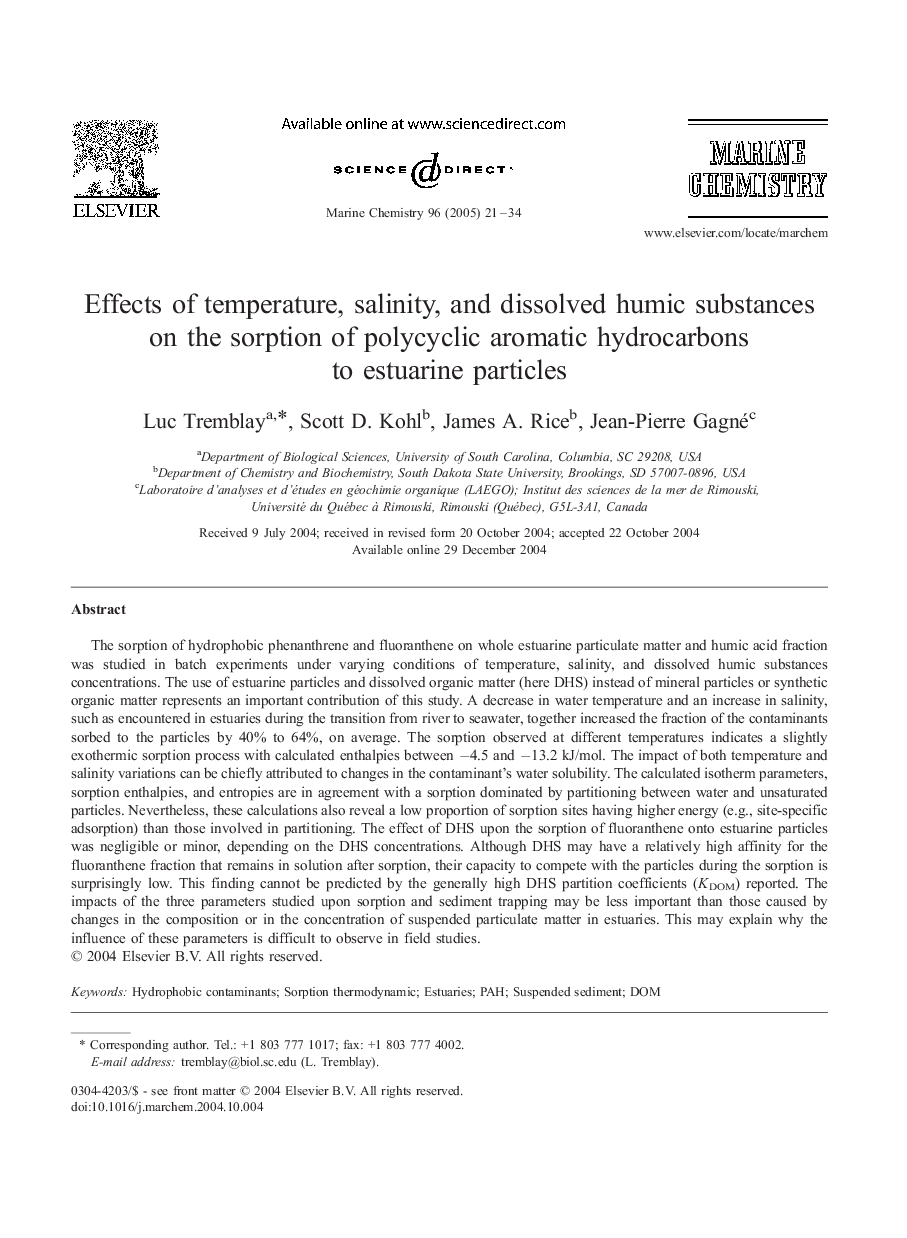| Article ID | Journal | Published Year | Pages | File Type |
|---|---|---|---|---|
| 9758369 | Marine Chemistry | 2005 | 14 Pages |
Abstract
The sorption of hydrophobic phenanthrene and fluoranthene on whole estuarine particulate matter and humic acid fraction was studied in batch experiments under varying conditions of temperature, salinity, and dissolved humic substances (DHS) concentrations. The use of estuarine particles and dissolved organic matter (here DHS) instead of mineral particles or synthetic organic matter represents an important contribution of this study. A decrease in water temperature and an increase in salinity, such as encountered in estuaries during the transition from river to seawater, together increased the fraction of the contaminants sorbed to the particles by 40% to 64%, on average. The sorption observed at different temperatures indicates a slightly exothermic sorption process with calculated enthalpies between â4.5 and â13.2 kJ/mol. The impact of both temperature and salinity variations can be chiefly attributed to changes in the contaminant's water solubility. The calculated isotherm parameters, sorption enthalpies and entropies are in agreement with a sorption dominated by partitioning between water and unsaturated particles. Nevertheless, these calculations also reveal a low proportion of sorption sites having higher energy (e.g., site-specific adsorption) than those involved in partitioning. The effect of DHS upon the sorption of fluoranthene onto estuarine particles was negligible or minor, depending on the DHS concentrations. Although DHS may have a relatively high affinity for the fluoranthene fraction that remains in solution after sorption, their capacity to compete with the particles during the sorption is surprisingly low. This finding cannot be predicted by the generally high DHS partition coefficients (KDOM) reported. The impacts of the three parameters studied upon sorption and sediment trapping may be less important than those caused by changes in the composition or in the concentration of suspended particulate matter in estuaries. This may explain why the influence of these parameters is difficult to observe in field studies.
Related Topics
Physical Sciences and Engineering
Chemistry
Chemistry (General)
Authors
Luc Tremblay, Scott D. Kohl, James A. Rice, Jean-Pierre Gagné,
